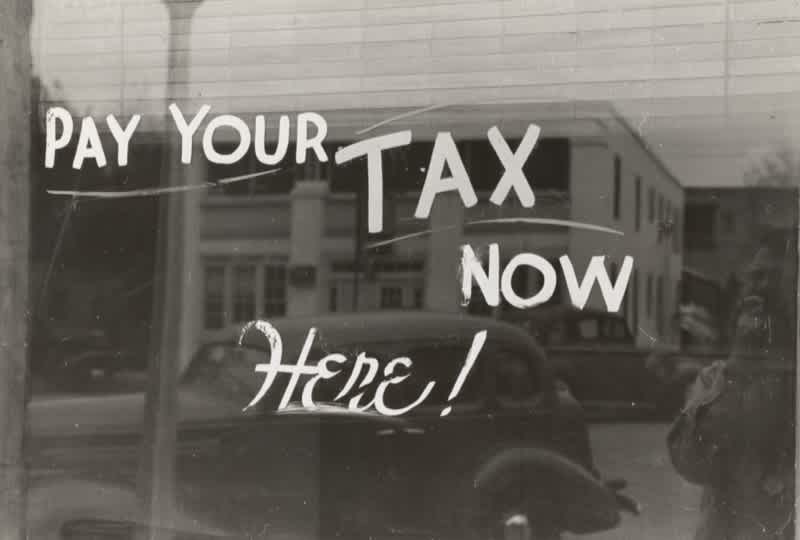Social Security
Retirees and beneficiaries of Social Security and Supplemental Security Income (SSI) will see a 2.5% cost-of-living adjustment (COLA) in 2025, providing some relief from rising costs due to inflation. This adjustment ensures that over 72.5 million Americans receiving benefits can maintain their purchasing power despite ongoing economic changes. Here’s what you need to know about the 2025 COLA increase and its implications.

R. Tyler End, CFP®
•
Published January 12th, 2023
•
Updated January 1st, 2025
Table of Contents
Key Takeaways
Retirees will see a Social Security increase for 2022 of 5.9%.
This is the largest increase since 1982.
Social Security increases are based on the Consumer Price Index for Urban Wage Earners and Clerical Workers.
Prices don’t stay the same once you retire. From groceries to medical expenses and even takeout meals, costs continue to climb, which can create a problem if your income remains stagnant. Fortunately, Social Security includes an annual adjustment designed to keep up with inflation, called the Cost-of-Living Adjustment (COLA).
Retirees and beneficiaries of Social Security and Supplemental Security Income (SSI) will see a 2.5% cost-of-living adjustment (COLA) in 2025, providing some relief from rising costs due to inflation. This adjustment ensures that over 72.5 million Americans receiving benefits can maintain their purchasing power despite ongoing economic changes. Here’s what you need to know about the 2025 COLA increase and its implications.
Cost-of-Living Adjustment (COLA) information for 2025
The 2.5% increase will begin with payments to nearly 68 million Social Security beneficiaries in January 2025. For the 7.5 million SSI recipients, the adjustment will take effect earlier, starting on December 31, 2024. Beneficiaries who receive both Social Security and SSI will see their updated payments reflected accordingly.
Additionally, the maximum taxable earnings subject to Social Security tax will rise to $176,100 in 2025, ensuring the program’s funding remains sustainable. For those still working, the earnings limits will also adjust:
- Workers under full retirement age can earn up to $23,400 annually before benefits are reduced. Earnings beyond this limit result in $1 being deducted for every $2 earned.
- For workers reaching full retirement age in 2025, the limit increases to $62,160, with $1 deducted for every $3 earned until the month of their birthday.
- There is no limit on earnings for individuals who are at or beyond full retirement age for the entire year.
When you look at your cost-of-living raise as a Social Security recipient, it’s directly tied to the increase in the Consumer Price Index for Urban Wage Earners and Clerical Workers (CPI-W) from one year to the next. The calculation for the 2025 increase is based on third-quarter numbers, comparing the CPI-W from July through September of 2024 to the same period in 2023. The average change, rounded to the nearest 0.001, determines the percentage of increase or decrease for the Cost-of-Living Adjustment (COLA). For 2025, this calculation resulted in a 2.5% increase, reflecting moderating inflation rates and ensuring that Social Security benefits keep pace with the cost of living.
Unlike most retirement income, Social Security is considered inflation-proof thanks to these cost-of-living adjustments.
Your 2025 COLA Notice
Beneficiaries will receive their COLA notices in December 2024. For the first time, these notices will be redesigned to make them more user-friendly, featuring:
- Plain, personalized language.
- A concise one-page format.
- Exact details of the new benefit amount and any applicable deductions.
These notices will be available online through the my Social Security account Message Center. Beneficiaries can choose to receive notifications via email, text message, or both. Switching to online delivery ensures secure and convenient access to important updates.
History of Automatic Cost-Of-Living Adjustments (COLA)
The COLA program, introduced in 1975, ensures that Social Security benefits keep pace with inflation. It is based on the Consumer Price Index for Urban Wage Earners and Clerical Workers (CPI-W), calculated by the Bureau of Labor Statistics. The CPI-W measures price changes for a basket of goods and services, with the third quarter of each year serving as the basis for determining the following year’s adjustment.
In 1972, a cost-of-living adjustment was passed as part of a group of Social Security amendments. The COLA took effect in June 1975 and kept the June date until 1982, when it was moved to December. Prior to 1975, increases had to be submitted and approved as legislation. The adjustment made it automatic.
Since its inception, COLA has protected the value of Social Security benefits, ensuring recipients are not left vulnerable to inflationary pressures. Here’s a quick look at COLA adjustments throughout history:
| Year | COLA % | Year | COLA % |
|---|---|---|---|
| 1975 | 8.0 | 2001 | 3.5 |
| 1976 | 6.4 | 2002 | 2.6 |
| 1977 | 5.9 | 2003 | 1.4 |
| 1978 | 6.5 | 2004 | 2.1 |
| 1979 | 9.9 | 2005 | 2.7 |
| 1980 | 14.3 | 2006 | 4.1 |
| 1981 | 11.2 | 2007 | 3.3 |
| 1982 | 7.4 | 2008 | 2.3 |
| 1984* | 3.5 | 2009 | 5.8 |
| 1985 | 3.5 | 2010 | 0.0 |
| 1986 | 3.1 | 2011 | 0.0 |
| 1987 | 1.3 | 2012 | 3.6 |
| 1988 | 4.2 | 2013 | 1.7 |
| 1989 | 4.0 | 2014 | 1.5 |
| 1990 | 4.7 | 2015 | 1.7 |
| 1991 | 5.4 | 2016 | 0.0 |
| 1992 | 3.7 | 2017 | 0.3 |
| 1993 | 3.0 | 2018 | 2.0 |
| 1994 | 2.6 | 2019 | 2.8 |
| 1995 | 2.8 | 2020 | 1.6 |
| 1996 | 2.6 | 2021 | 1.3 |
| 1997 | 2.9 | 2022 | 5.9 |
| 1998 | 2.1 | 2023 | 8.7 |
| 1999 | 1.3 | 2024 | 3.2 |
| 2000 | 2.5 | 2025 | 2.5 |
It can also be useful to review how the Consumer Price Index has influenced COLA in recent years. Here’s a breakdown of the average CPI-W for third quarters dating back to 2007, as well as the adjustments Social Security recipients saw as a result. In 2009-2010 and 2015, the CPI-W dropped, and therefore there was no Social Security raise.
| Year | Average Third-Quarter CPI-W | Resulting COLA |
|---|---|---|
| 2007 | 203.596 | 2.3% |
| 2008 | 215.495 | 5.8% |
| 2009 | 211.001 | No COLA |
| 2010 | 214.136 | No COLA |
| 2011 | 223.233 | 3.6% |
| 2012 | 226.936 | 1.7% |
| 2013 | 230.327 | 1.5% |
| 2014 | 234.242 | 1.7% |
| 2015 | 233.278 | No COLA |
| 2016 | 235.057 | 0.3% |
| 2017 | 239.668 | 2.0% |
| 2018 | 246.352 | 2.8% |
| 2019 | 250.200 | 1.6% |
| 2020 | 253.412 | 1.3% |
| 2021 | 268.421 | 5.9% |
| 2022 | 291.901 | 8.7% |
| 2023 | 301.236 | 3.2% |
| 2024 | 308.729 | 2.5% |
- The Average Third-Quarter CPI-W reflects the official data from the Bureau of Labor Statistics.
- COLA adjustments for each year are based on the increase in the third-quarter CPI-W compared to the previous year.
- For 2024, the CPI-W for Q3 is 308.729, resulting in a 2.5% COLA for 2025.
Next Steps
The Cost-of-Living Adjustment (COLA) ensures that Social Security benefits keep pace with inflation, providing vital financial stability for millions of Americans. By analyzing historical trends in the Consumer Price Index for Urban Wage Earners and Clerical Workers (CPI-W), we can see how COLA has adapted over time to reflect economic conditions, from the high inflation of the late 1970s to more stable periods in recent decades.
For 2025, the 2.5% COLA reflects moderating inflation, offering beneficiaries a modest but necessary boost to maintain purchasing power. As the economy evolves, COLA remains a critical component of retirement security, safeguarding recipients against the rising cost of essentials like food, housing, and healthcare.
Whether you’re already receiving benefits or planning for the future, understanding how COLA works can help you make informed financial decisions. Consider consulting with a Certified Financial Planner® to maximize your benefits and build a strategy that ensures long-term stability.
Share this advice

Tyler is a Certified Financial Planner® and CEO & Co-Founder at Retirable, the retirement peace of mind platform. Tyler has nearly 15 years of experience at leading companies in the wealth management and insurance industries. Before Retirable, Tyler worked as Head of Operations Expansion at PolicyGenius, expanding the company’s reach into new products — turning PolicyGenius into an industry-leading disability and P&C insurance distributor. Before working at PolicyGenius, Tyler worked as Wealth Management Advisor at prominent financial services organizations.
As an advisor, Tyler played an integral role in helping clients define goals, achieve financial independence and retire with peace of mind. Through this work, Tyler has helped hundreds of thousands of people get the financial planning and insurance advice they need to succeed. Since founding Retirable, Tyler’s innovative approach to retirement planning has been featured in publications such as Forbes, Fortune, U.S. News & World Report, and more.
Introduction
Benefits
Taxes
Considerations
Social Security in 2022
Local
Spouse
Applying for Social Security
Share this advice

Tyler is a Certified Financial Planner® and CEO & Co-Founder at Retirable, the retirement peace of mind platform. Tyler has nearly 15 years of experience at leading companies in the wealth management and insurance industries. Before Retirable, Tyler worked as Head of Operations Expansion at PolicyGenius, expanding the company’s reach into new products — turning PolicyGenius into an industry-leading disability and P&C insurance distributor. Before working at PolicyGenius, Tyler worked as Wealth Management Advisor at prominent financial services organizations.
As an advisor, Tyler played an integral role in helping clients define goals, achieve financial independence and retire with peace of mind. Through this work, Tyler has helped hundreds of thousands of people get the financial planning and insurance advice they need to succeed. Since founding Retirable, Tyler’s innovative approach to retirement planning has been featured in publications such as Forbes, Fortune, U.S. News & World Report, and more.
Free Retirement Consultation
Still have questions about how to properly plan for retirement? Speak with a licensed fiduciary for free.



